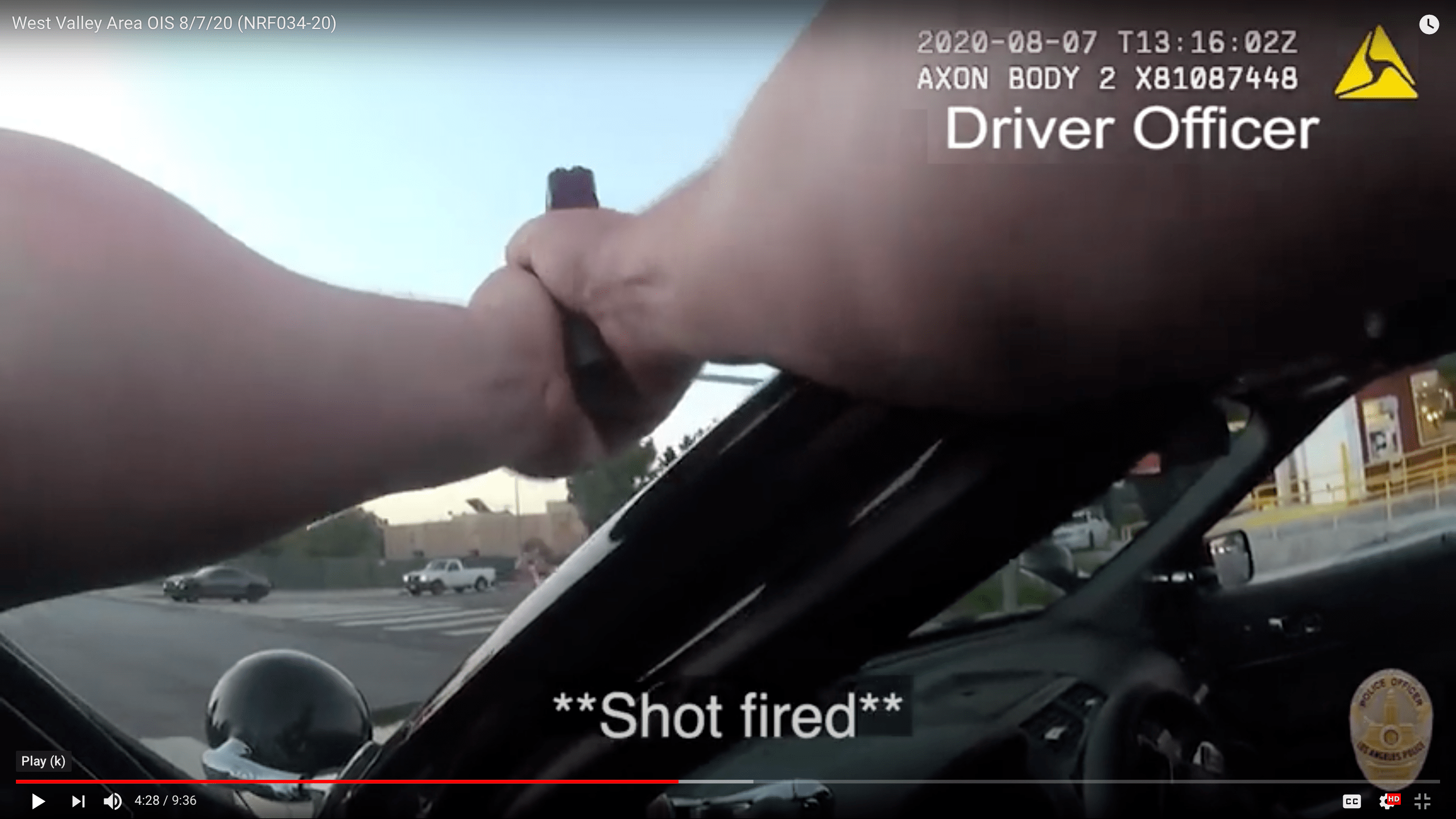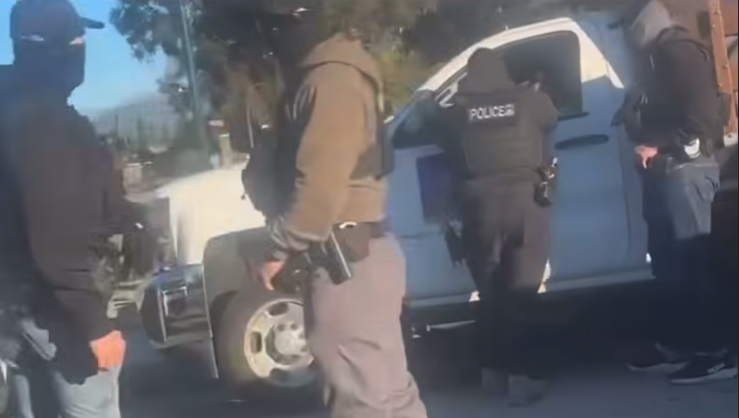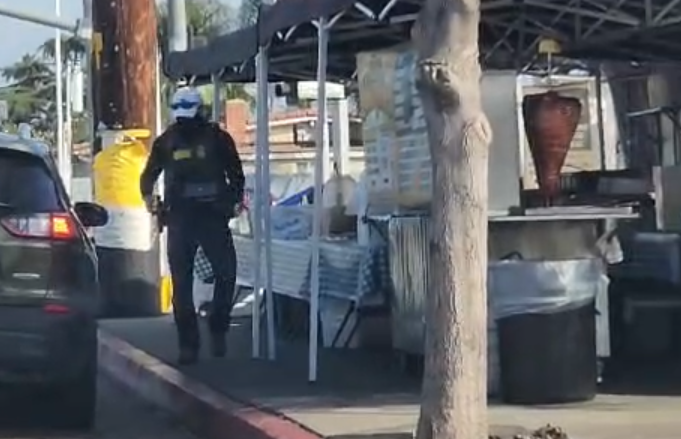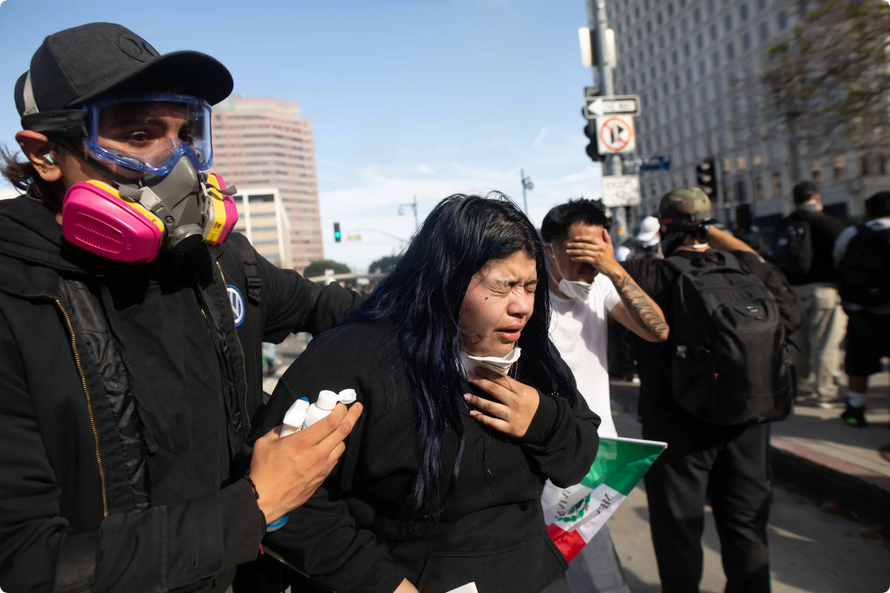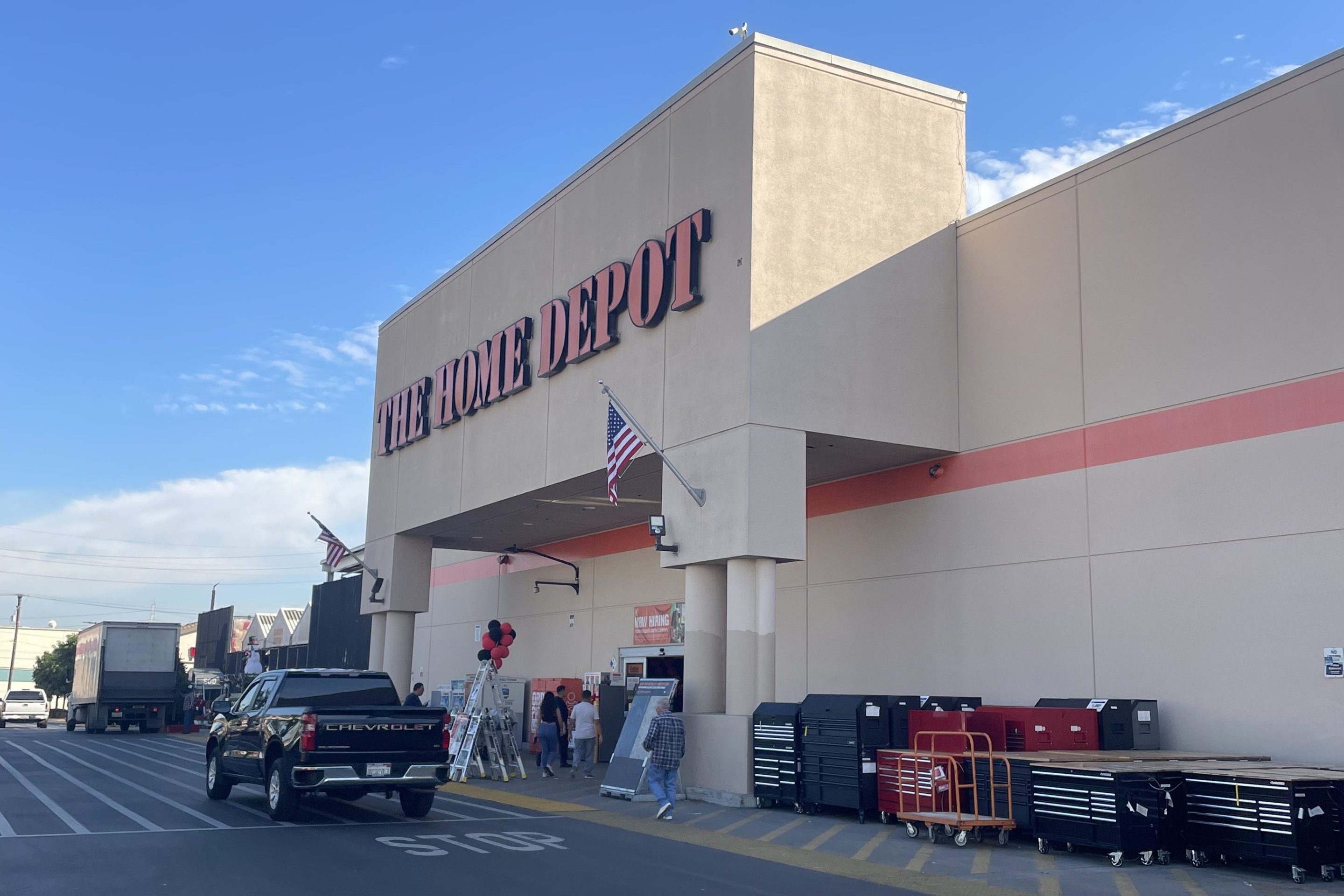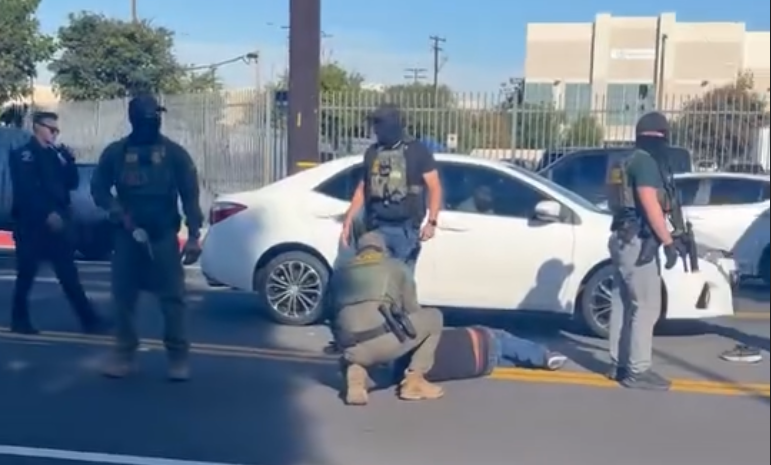o if we do see him—I’ll try and keep a distance—you’re going to grab the bean bag [shotgun]. OK?” West Valley Area LAPD Officer Steven Pressler said to his partner on the morning of August 12, as the two drove towards Reseda and Victory Boulevard’s intersection in the Valley, where a man was reportedly standing in the middle of the intersection with a knife. “Yes sir,” Pressler’s partner responded from the passenger seat.
“Load that thing or [if] it’s ready to go, make sure there’s one in the chamber,” Pressler said, referring to the less-lethal Remington 870 shotgun stashed in the trunk. “Yes, sir,” his partner responded. “And then umm...we’re going to keep a distance to try to de-escalate it,” Pressler continued. “And then umm…” a dispatcher over the radio interrupts Pressler. “10A67, 10A67, come in?” The dispatcher says. “10A67, are you Code Sam or Code Sam 40?” (Code SAM refers to a unit equipped with a bean-bag shotgun.) “67 roger,” Pressler confirms before he continues talking to his partner “So, we’re going to um...try to de-escalate as much as possible.”
Before arriving at Reseda and Victory Boulevard, Pressler says “he might be suicidal by cop,” referring to a term mostly used by law enforcement to describe an encounter when a suicidal person tells a police officer to kill them or becomes violent. Moments later, the two pull up to the west side of the intersection across the street from Reseda Park, while rush hour traffic builds, and cars queue up for breakfast at a McDonald’s drive-through on the corner. “Okay, here he is,” Pressler says as he throws the patrol car in park, and the pair jump out. “Get the bean bag, hurry up!” Pressler orders.
Pressler’s partner rushes to the rear end of the car. “Drop the knife, man,” Pressler says to Aleksandr Rusanovskiy, 32, as Pressler takes cover behind the driver's side door, and his partner unlocks the trunk. “Drop the knife!” Pressler says again as he raises his pistol while his partner gets his hands on the less-lethal Remington shotgun, and Rusanovskiy walks west on Victory Boulevard towards them. “Drop the knife!” Pressler yells as Rusanovski screams something unintelligible. Pressler’s partner cocks the shotgun. “Hey, drop it!” he yells as he moves towards Rusanovskiy. Seconds later, Pressler shoots Rusanovskiy twice as he reportedly advances quickly towards Pressler holding a knife.
The patrol cars partially block the view of Pressler’s body-worn camera during the majority of the encounter but the right side of Rusanovskiy’s body and several cars in the background can be seen as Rusanovskiy is presumably hit with a second round. After the shooting, his body is seen strewn across the westside crosswalk of Reseda Boulevard, about 10’ to 20’ in front of the patrol car. Pressler walks up to Rusanovskiy and kicks the kitchen knife away from him. A woman in turquoise standing on the sidewalk passes back and forth with her hands over her face. Later she identifies herself as Rusanovskiy’s “mom.” Body-worn camera footage shows that she was on the corner for the duration of the encounter.
Twelve seconds passed from when LAPD officer Pressler and his partner jumped out of their patrol car and when Rusanovskiy finally hit the ground. The shooting happened so quickly, the traffic light didn’t even have time to change, and the de-escalation techniques that Pressler briefed his partner on never came into play.
“Tactical de-escalation does not require that an officer compromise his or her safety.”
The Police Executive Research Forum (PERF), a police policy organization that works with law enforcement agencies across the country says that officers dealing with potentially suicidal people should not aim their weapon at the person. They should move a safe distance away and engage them in a conversation rather than shouting commands. In 2019, LAPD Chief Michel Moore agreed with PERF’S guidance telling the Washington Post, “Pointing a gun at someone and saying, ‘I’m here to save you, it kind of has a mixed message. We should do anything we can to minimize the use of force and maximize the saving of lives.”
LAPD spokesperson Josh Rubenstein and the LAPD Media Relations Division did not respond to questions asking if Pressler and his partner could have created more distance between themselves and Rusanovskiy or prepared themselves differently. “That Critical Incident Community Briefing is all the information available to the public at this time. The incident is still under investigation,” LAPD officer Drake Madison told L.A. Taco via email about the YouTube video and press release issued by the department.
According to a May 2018 resource guide from the LAPD on de-escalation: “de-escalation techniques” are designed to reduce the “intensity of an encounter with a suspect” and enable officers “to have additional options” available to gain voluntary compliance with people, “or mitigate the need to use a higher level of force.” The resource guide also notes, however, “Tactical de-escalation does not require that an officer compromise his or her safety.”
A critical part of de-escalation, according to the LAPD is time: “Time is an essential element of de-escalation as it allows officers the opportunity to communicate with the suspect, refine tactical plans, and, if necessary, call for additional resources.”
In 2017, the LAPD revised its use of force of policy. The revised policy encourages officers to use de-escalation techniques “whenever it is safe and reasonable to do so.” The decision came after the LAPD recorded a record eight shootings that were deemed out of policy by the LAPD Police Commission (the civilian oversight board of the LAPD.) Since then, community members have repeatedly accused the department of resorting to lethal force rather than using “de-escalation techniques” or “less-lethal” force.
The August 12 shooting in the West Valley shares eerie similarities to the April 22 shooting of Daniel Hernandez. In both instances, the LAPD responded to a man with a knife reportedly suffering from a mental health crisis. Hernandez had been in a multi-vehicle collision and was reportedly trying to cut himself. A wrongful death lawsuit filed by the family of Hernandez against the City of Los Angeles claims that when LAPD officer Toni McBride arrived at the scene, rather than administer immediate aid to the victims of the collision, McBride and five other officers stood by their patrol cars. When Hernandez emerged from the car accident, McBride shot him 6 times after he began approaching her with a box cutter. Moments before shooting Hernadez, McBride—who is also a competitive shooter—called for less-lethal munitions.
A critical part of de-escalation, according to the LAPD is time: “Time is an essential element of de-escalation as it allows officers the opportunity to communicate with the suspect, refine tactical plans, and, if necessary, call for additional resources.” (A 2016 Los Angeles Police Department directive states.)
The fatal shootings of Hernandez and Rusanovski are just two recent examples of the LAPD responding to mental health calls that resulted in police shootings.
“We have gone from asking the police to be part of the solution, to being the only solution for problems they should not be called on to solve in the first place.”
Two days before killing Rusanovski, uniformed Hollywood Division patrol officers responded to a “male with a mental illness” radio call for service. 32-year-old Alfonso Mauldin was reportedly armed with scissors, and his wife didn’t feel safe. When LAPD officers responded, Mauldin, barricaded himself behind a locked door in his apartment. After an LAPD officer attempted to kick the door down, Mauldin came out abruptly and a fire extinguisher was used to try and subdue him in addition to several less-lethal and lethal rounds being fired. In the end, the LAPD officer that used the fire extinguisher was hit in the arm by friendly fire. Mauldin was not hit by gunfire and was taken into custody and charged with two counts of assaulting a police officer with a deadly weapon, a charge that can carry up to three years in prison.
The incidents this summer come when community members, city leaders, and even law enforcement are considering proposals to remove police from certain calls for service, including non-violent mental health calls. A June 2020 motion presented by Councilmembers Wesson, Harris-Dawson, Martinez, Price, and Bluemenfield stated: “Budget cuts in social services have resulted in law enforcement taking on a greater role in dealing with homelessness, mental health and even COVID-19 related responses, and we have been asking for too much from LAPD while not properly funding these services. We have gone from asking the police to be part of the solution, to being the only solution for problems they should not be called on to solve in the first place.”
